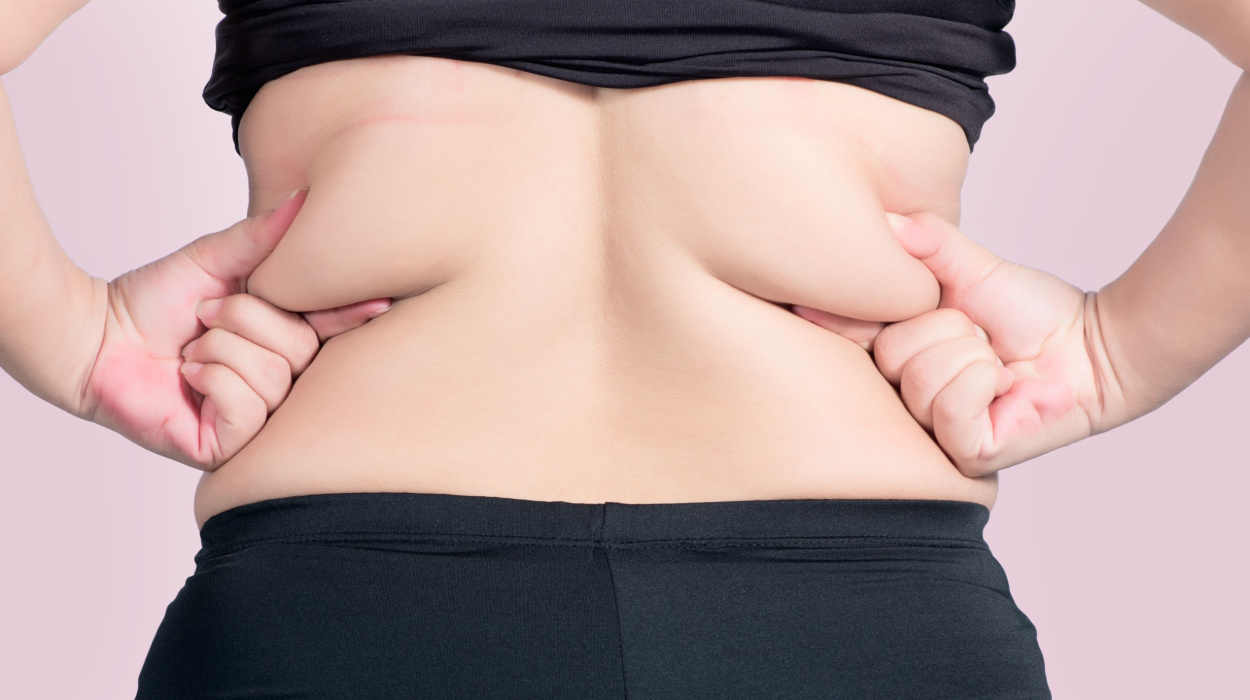Back fat usually results in unwanted excess body fat around the bra, sides, and abdomen area. It tends to accumulate due to various factors such as genetics, sedentary lifestyles, and poor dietary habits. Many people want to know how to lose back fat.
First off, it is not possible to target only back fat. What you should aim for is overall weight reduction. Back exercises can help increase muscle bulk in the back which may help with weight loss.
So, in this article, we suggest several exercises for back fat. Additionally, we will discuss important lifestyle changes like understanding how many carbs per day to consume in a diet to support your journey toward a leaner and healthier back.
How To Get Rid Of Back Fat: 5 Effective Exercises
Getting rid of back fat takes more than just exercise. It requires a full-on approach that also includes many lifestyle changes. Here are 5 effective back fat exercises:
- Cardiovascular exercises.
- Upper back exercises.
- Lower back exercises.
- Strength training.
- Yoga.
How To Lose Back Fat: 5 Best Exercises
Back fat, also known as bra bulge or love handles, refers to the stubborn fatty deposits that accumulate in the area between the upper back and waist.
Excess fat not only affects appearance but also has health consequences. Carrying extra weight in this area can increase the risk of developing health conditions such as low back pain[1] and can increase the risk of cardiovascular diseases.[2]
Cardiovascular Exercises
Usually, the first step towards a weight loss journey is cardio exercises. To lose back fat, engage in cardiovascular exercises[3] to burn calories and reduce overall body fat.
Some cardiovascular exercises that can contribute to back fat loss include running, jogging, swimming, and jumping rope. General guidelines[4] say you should aim for at least 150 minutes of moderate-intensity aerobic exercise and muscle-strengthening activities on two or more days per week.
Upper Back Exercises
While cardiovascular exercises target your whole body, targeted workouts may help as well. Upper back exercises can reduce the risk of back pain[5] and help achieve a more toned and defined upper body. They also help arm and back fat because the exercise specifically targets those areas. Here are some exercises to get rid of back fat:
Pull-Ups/Chin-Ups
To help lose back fat, pull-ups are a great exercise. Pull-ups work the latissimus dorsi, or lats, which are the largest muscles in the back, giving a sleek and toned look.
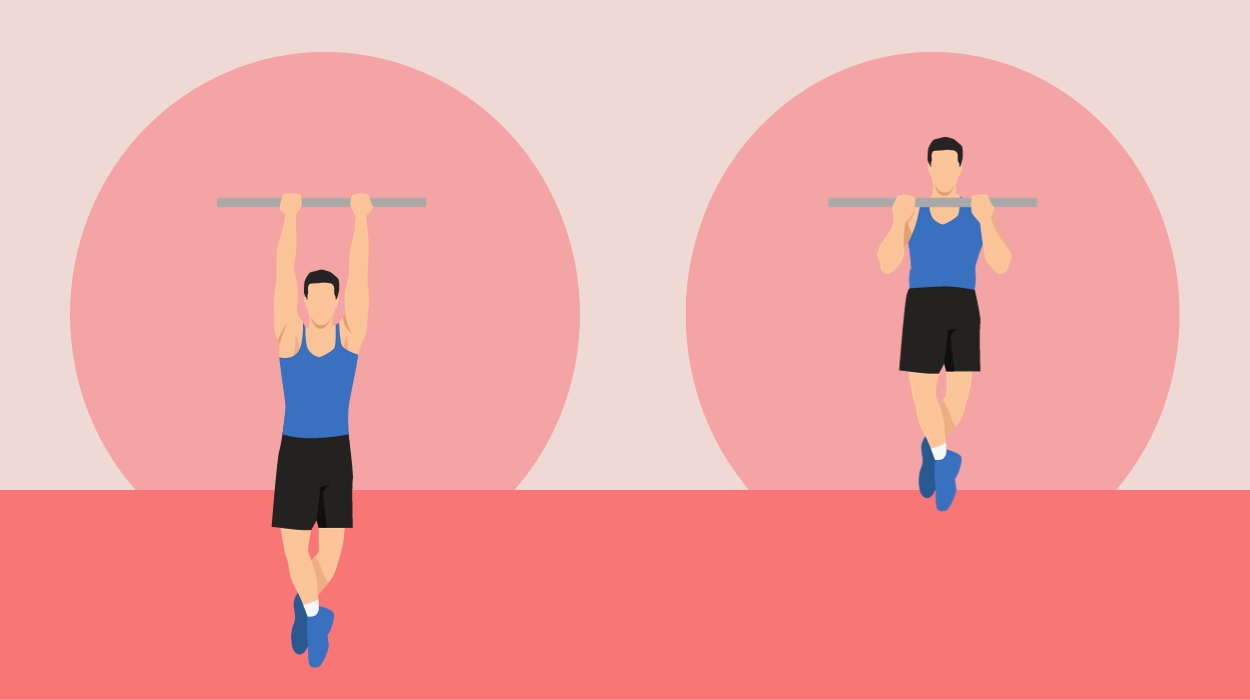
How To Do:
- Grab a pull-up bar with your palms facing away (pull-ups) or toward you (chin-ups).
- Hang with your arms fully extended, then pull your body up until your chin is above the bar.
- Lower yourself back down with control.
Optimal Sets & Reps: 3 sets of 8 reps
Lat Pulldowns
Not quite ready for pull-ups? Lat pulldowns are a great alternative. Lat pulldowns target the lat muscles, just like pull-ups, but provide more stability.
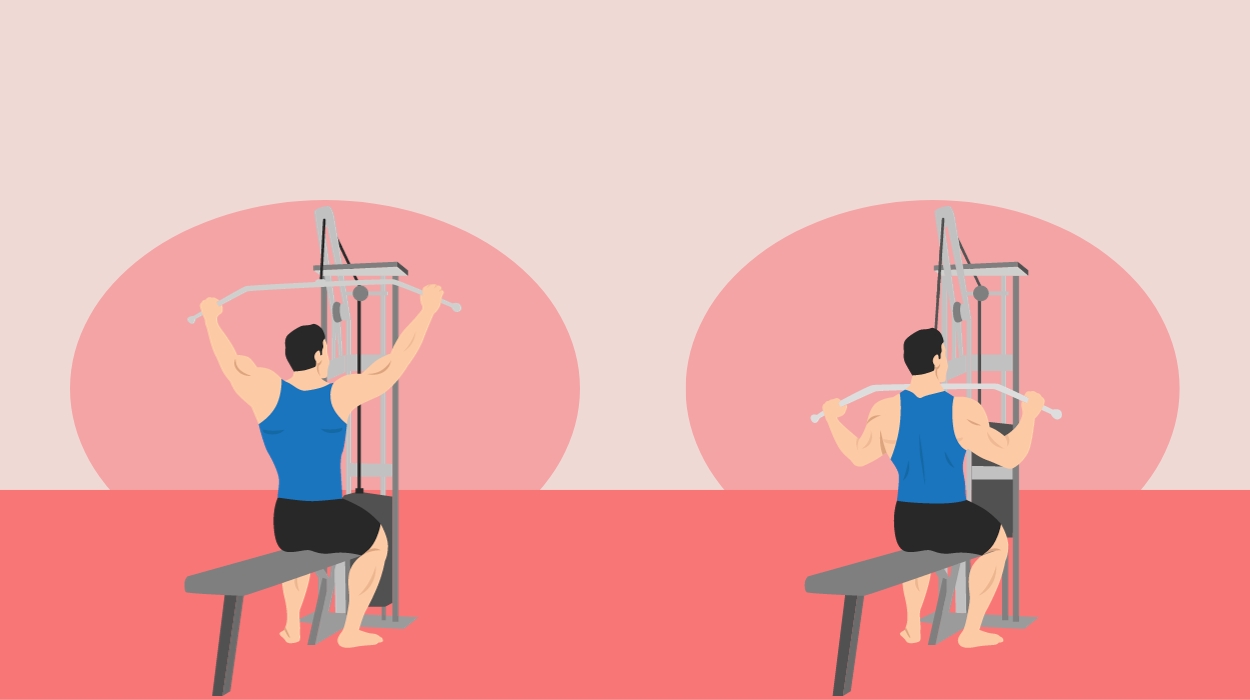
How To Do:
- Sit at the lat pulldown machine with your knees secured under the pads and your hands gripping the bar overhead.
- Pull the bar down to your chest, squeezing your shoulder blades together.
- Slowly release the bar back to the starting position.
- Repeat for the desired number of repetitions.
Optimal Sets & Reps: 3-4 sets of 8-12 reps
Seated Cable Rows
Rows are another great exercise for toning your back. You can perform rows using dumbbells, resistance bands, or a cable machine. Rows help strengthen the upper back and improve posture. This exercise primarily works with the lats and rhomboids.
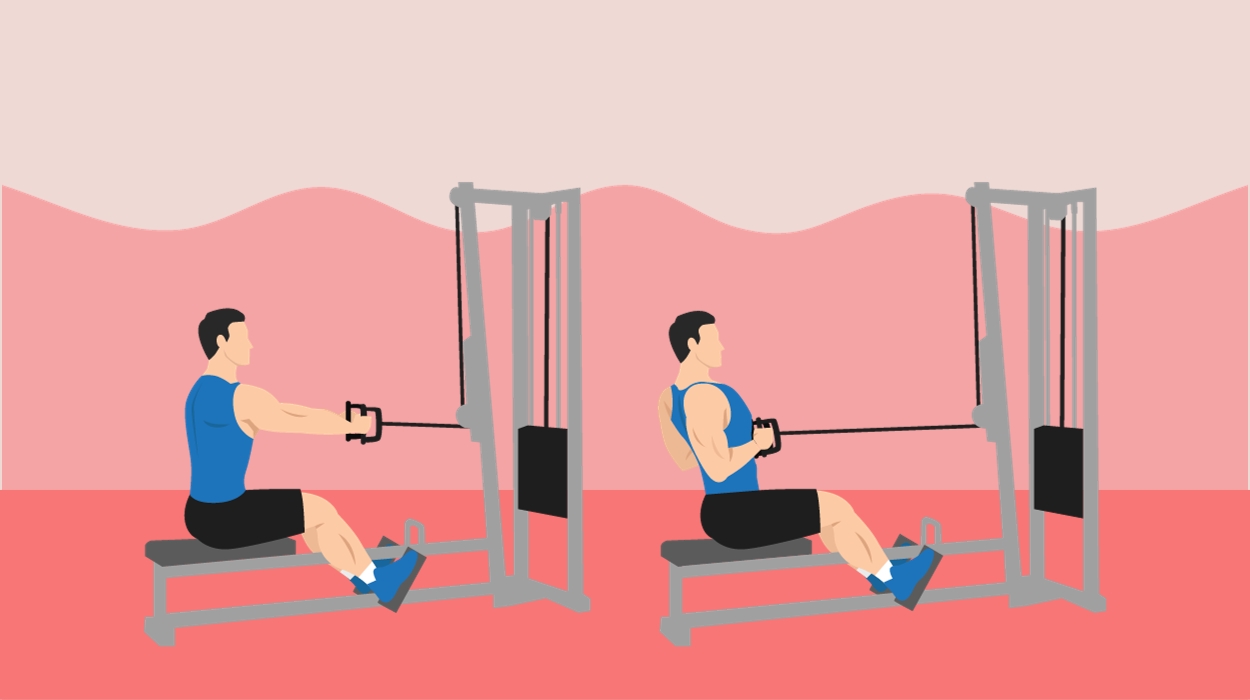
How To Do:
- Sit at a cable row machine and select the appropriate weight.
- Keep your back straight and pull the handle toward your torso.
- Squeeze your shoulder blades together as you pull.
- Slowly release the tension and extend your arms.
Tips:
- Focus on proper form.
- Use a weight or resistance level that allows you to complete each set with good technique.
- Gradually increase the intensity over time to continue building strength and definition in the upper back muscles.
Optimal Sets & Reps: 3-5 sets of 10-15 reps
Lower Back Exercises
Another aspect of losing back fat is targeting the lower back. Your lower back is connected to your abdomen, where fat is commonly accumulated and stored. Here are some exercises to try:
Bridge
This is an easy exercise that doesn’t require equipment.

How To Do:
- Lie on your back with your knees bent and feet flat on the floor.
- Place your arms by your sides.
- Lift your hips off the ground, creating a straight line from your shoulders to your knees.
- Squeeze your glutes at the top of the movement.
- Lower your hips back to the ground and repeat.
Optimal Sets & Reps: 3 sets of 10-12 reps
Deadlifts
Deadlifts are a compound exercise. That means that it engages multiple muscle groups, including the lower back.
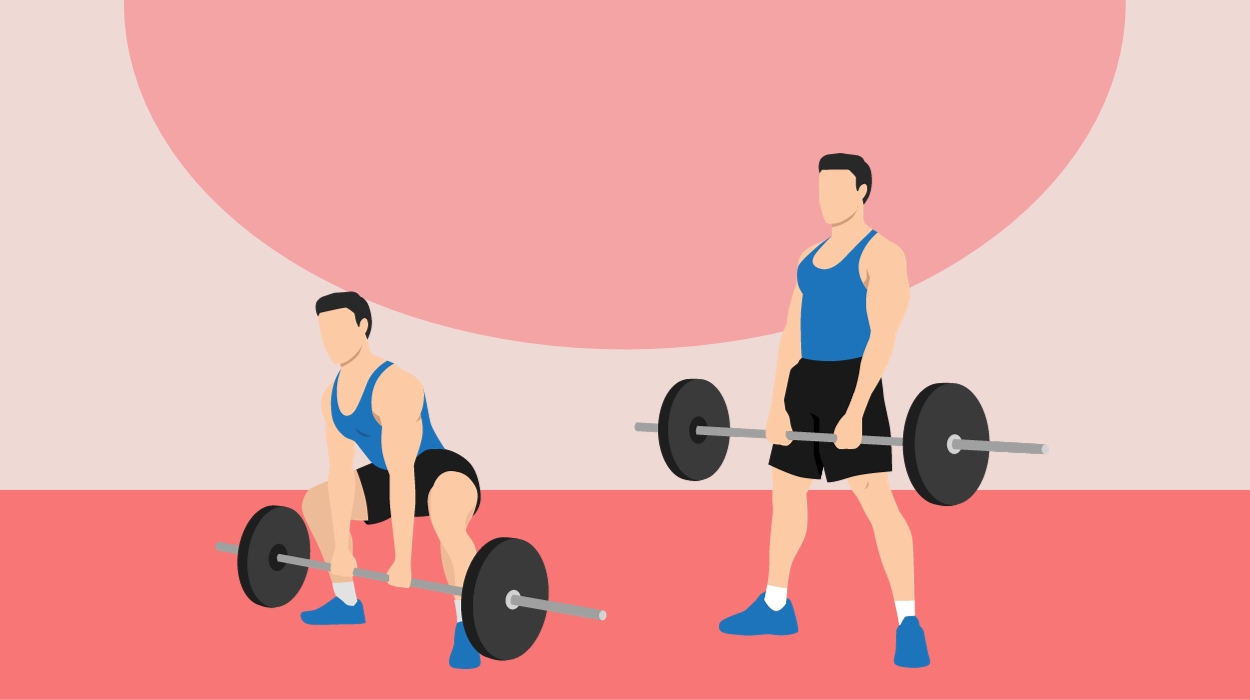
How To Do:
- Stand with a barbell in front of you, feet hip-width apart.
- Bend at the hips and knees to lower yourself, keeping your back straight.
- Grip the barbell, stand up, and then lower it back to the ground.
Optimal Sets & Reps: 3-4 sets of 2-6 reps
Back Extensions
This lower back exercise helps strengthen the muscles of the lower back, glutes, and hamstrings. It can be done with or without equipment.
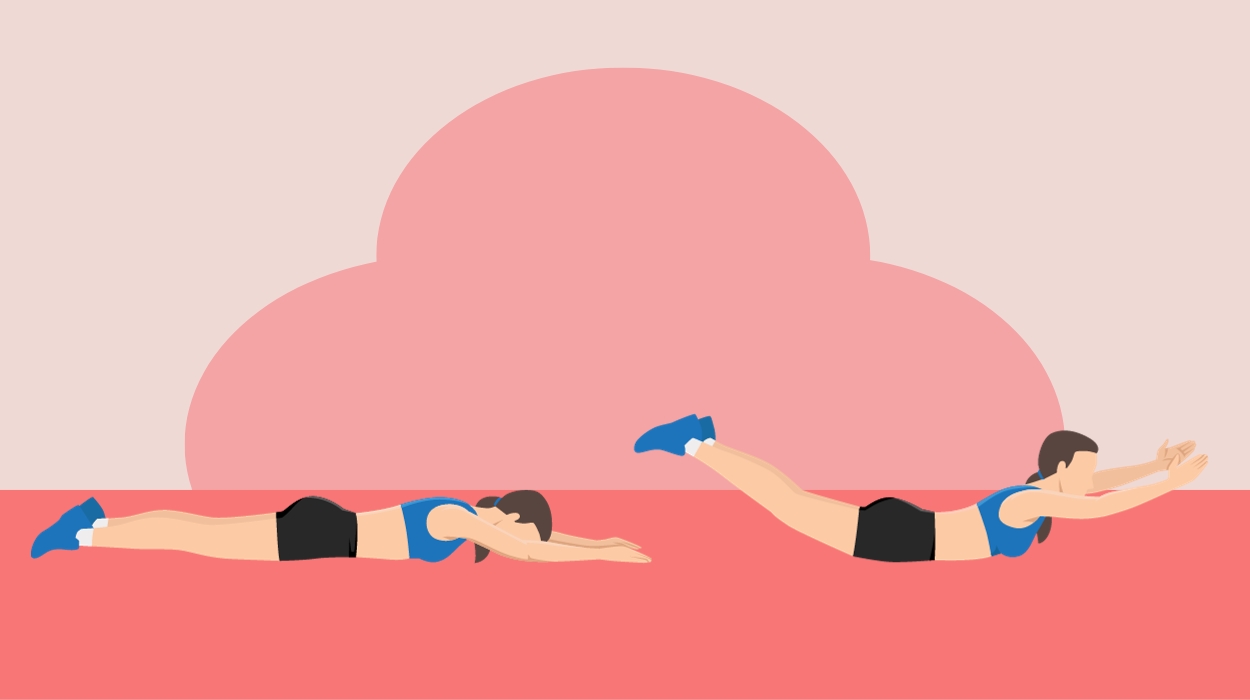
How To Do:
- Lie face down on an exercise mat or the floor with your arms extended overhead and your legs straight.
- Engage your lower back and glutes to lift your chest, arms, and legs off the ground simultaneously.
- Hold the position for a moment, squeezing your lower back muscles.
- Lower your chest, arms, and legs back down to the ground.
- Repeat for the desired number of repetitions.
Optimal Sets & Reps: 3-4 sets of 10-15 reps
Strength Training
Building muscle also contributes to reducing back fat. Strength training targets and increases muscle mass.[6] If you need to shed subcutaneous fat, try exercises like dumbbell rows, kettlebell swings, and pull-ups to strengthen your back and reduce fat.
These exercises engage multiple muscles in your back, including your lats, rhomboids, and traps. They also help you burn more calories and shed back fat.
Yoga
Yoga is another option to help get rid of back fat. Yoga can tone and strengthen the muscles in your back. Some poses can contribute to fat loss[7] and improve your posture. Here are some yoga poses that can help target and shed fat in your back muscles.
Cobra Pose (Bhujangasana)
This pose helps strengthen the muscles in your lower and upper back.
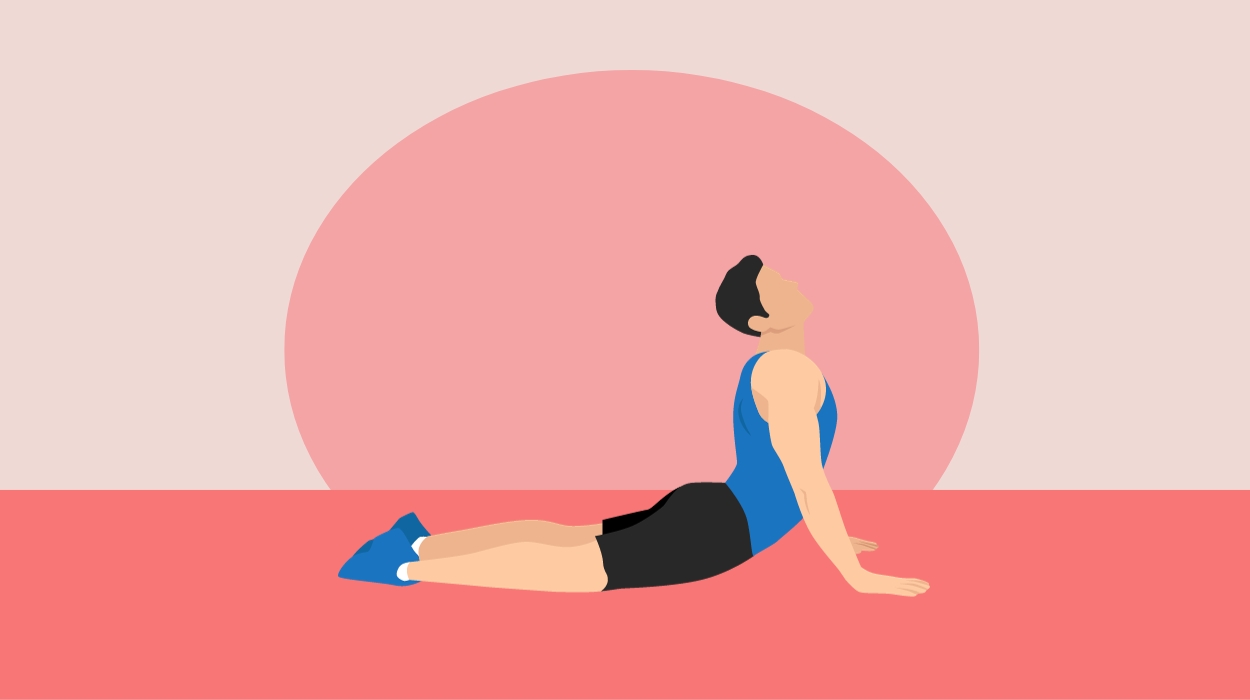
How To Do:
- Lie on your stomach, and place your hands under your shoulders.
- Gently lift your upper body while keeping your pelvis on the floor.
Optimal Sets & Reps: 3-4 sets of 10-15 reps
Locust Pose (Salabhasana)
This pose targets the lower back and buttocks.
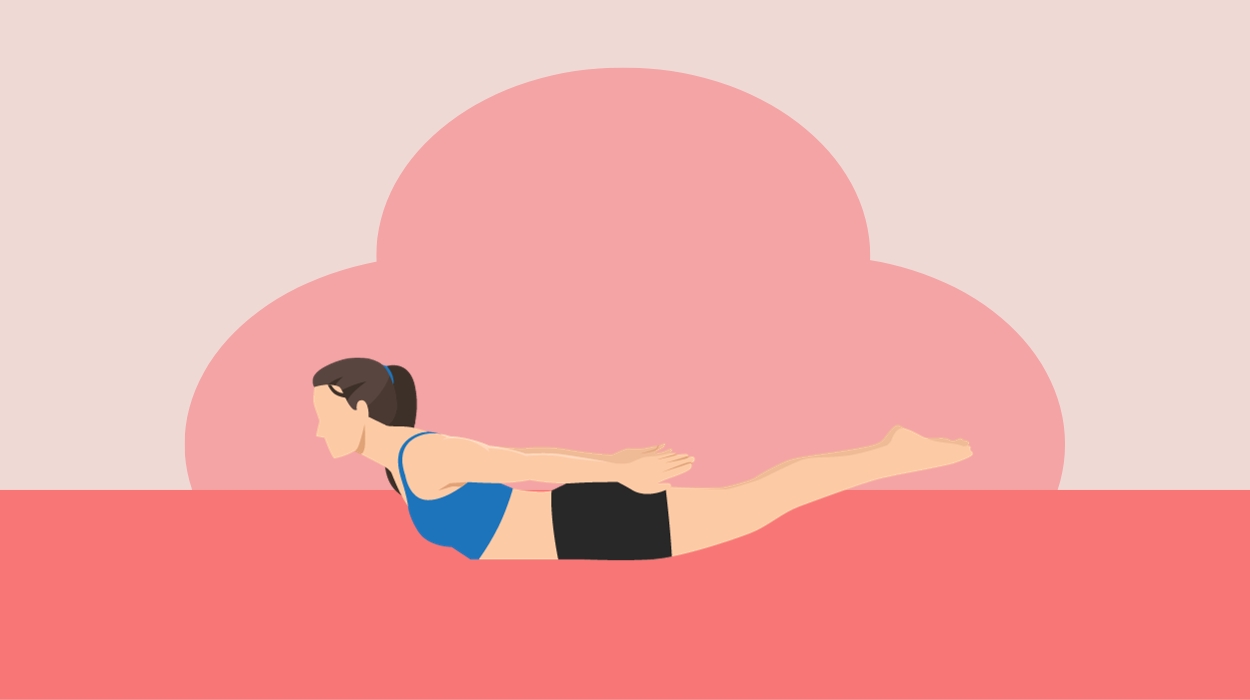
How To Do:
- Lie on your stomach.
- Lift your legs, chest, and arms off the ground simultaneously.
Optimal Sets & Reps: 3-5 sets of 12-15 reps.
Bridge Pose (Setu Bandhasana)
This pose strengthens the lower back, glutes, and hamstrings.
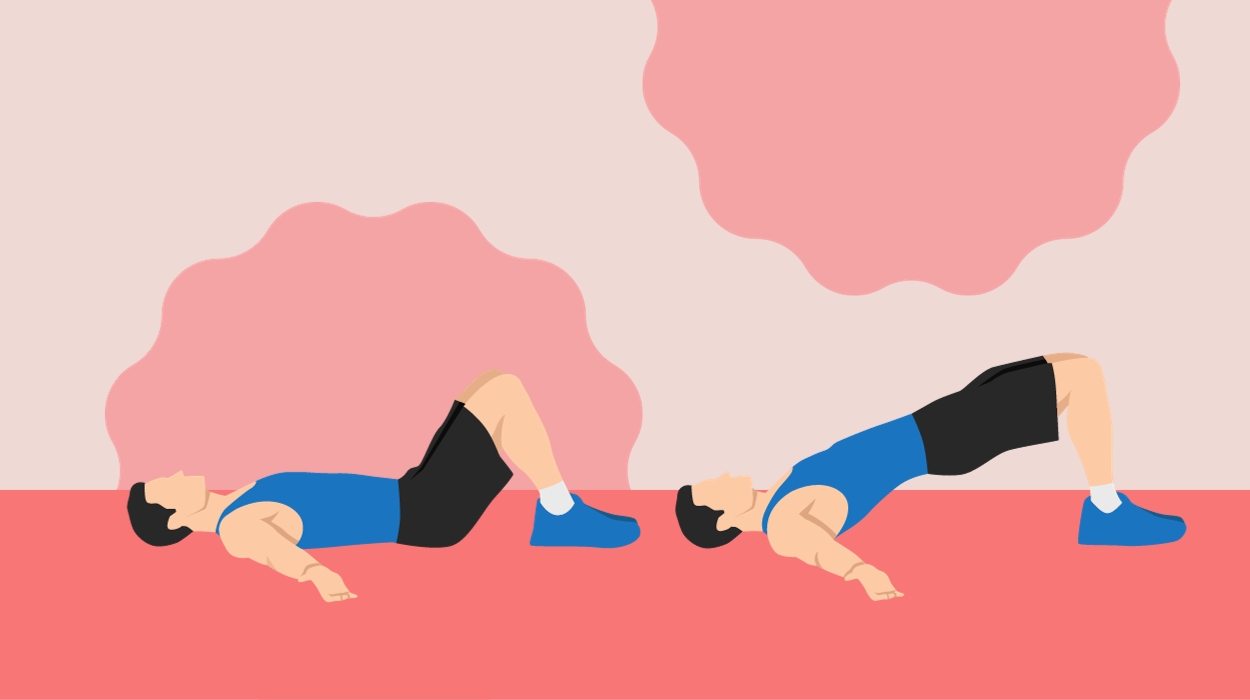
How To Do:
- Lie on your back.
- Lift your hips off the ground
Optimal Sets & Reps: 3 sets of 10-15 reps.
Cat-cow Pose (Marjaryasana-Bitilasana)
This dynamic combination of poses helps improve flexibility and mobility in the spine while engaging the back muscles.
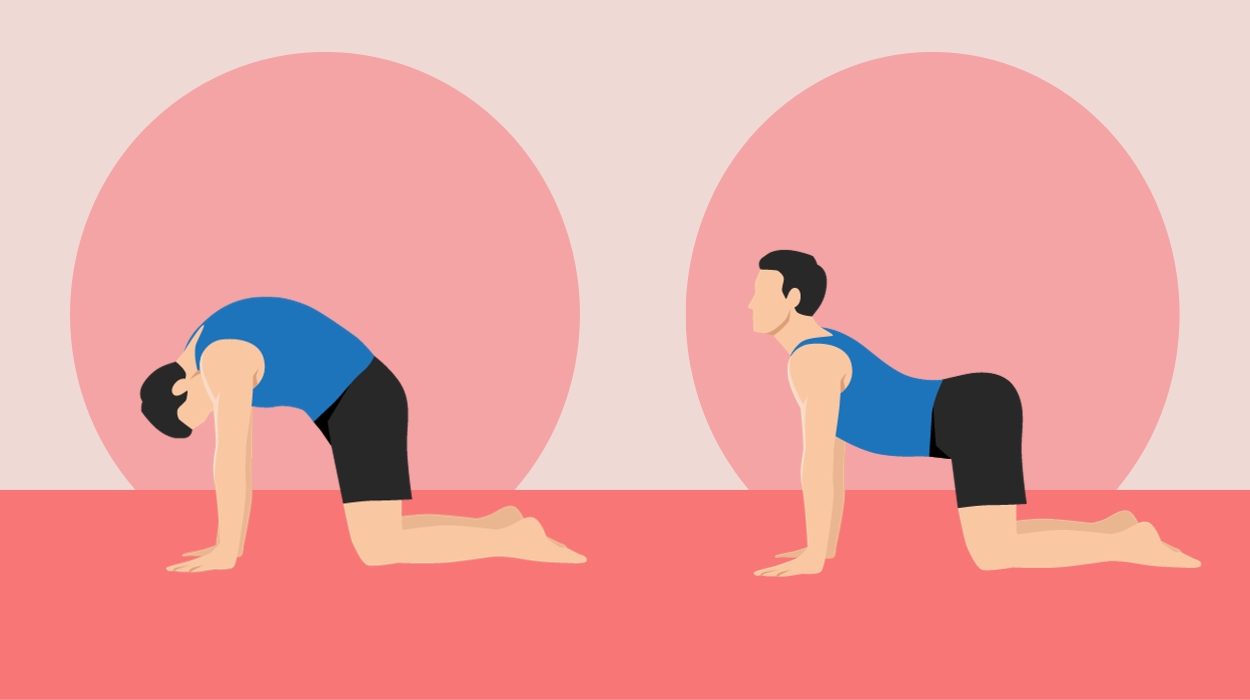
How To Do:
- Start on hands and knees, inhale into the cow pose, arching the back, lifting the chest, and tilting the pelvis upward.
- On the exhale, the cat pose is assumed by rounding the spine, tucking the chin, and drawing the belly towards the spine.
Optimal Sets & Reps: 1–3 sets of 5–10 reps.
What Causes Excess Back Fat?
Excess back fat, like most fat, can result from a combination of factors. Here are some of the common causes of excess back fat:
- Poor diet: A poor diet lacking proper nutrition can contribute to overall body fat. Consuming an unhealthy diet[8] full of unhealthy fats, sugar, and processed foods can lead to weight gain and an increase in fat storage, including the back.
- Lack of physical activity: Living a sedentary lifestyle and not getting enough physical activity[9] can lead to the accumulation of fat. Spending extended periods sitting or not engaging in regular exercise causes our metabolism to slow down. This makes it easier for fat to accumulate in stubborn areas like the back.
- Genetics: Genetics can be blamed for many things, including back fat. Some people are genetically predisposed[10] to store fat in certain areas of the body. These genetic factors can determine where our bodies tend to deposit and store excess fat.
- Stress: Stress is often part of everyone’s daily lives. Unfortunately, this can also be a culprit behind back fat. When we’re stressed, our bodies release cortisol, the hormone that tells our body to store fat. Cortisol also encourages the storage of fat.[11]
Diet And Lifestyle Tips To Get Rid Of Back Fat Safely
Losing back fat requires more than specific exercises that target the back fat. It often involves making certain lifestyle changes that contribute to overall fat loss. Here are some considerations for changes that can help you say goodbye to stubborn back fat.
Balanced Diet
One key aspect of losing weight is maintaining a healthy diet.[12] Start by creating a calorie deficit in your diet. A deficit is essential to help lose weight. A calorie deficit means consuming fewer calories than the body needs to maintain its current weight. Tracking daily calorie intake and practicing portion control can help you eat fewer calories and achieve this deficit.
Additionally, focus on a nutritious diet that includes various fruits, vegetables, lean proteins, whole grains, and healthy fats. Focusing on whole and nutrient-dense foods can supplement essential vitamins, minerals, and fiber needs while helping you stay satisfied. You can also add supplements to help get the vitamins and nutrients you need in addition to the food you eat.
Adequate Sleep
Sleep also plays a crucial role in reducing fat. When you’re sleep-deprived, your body produces more cortisol, a stress hormone known to promote fat storage. Aim for at least 7-8 hours of quality sleep[13] each night to keep your hormone levels in check and support your weight loss goals.
Stress Management
Managing stress can also help you with unhealthy eating habits[14] such as stress eating. Incorporate stress management techniques into your routine. Try meditation, deep breathing exercises, or engaging in activities that you enjoy to keep stress at bay.
Hydration
Staying hydrated is not only essential for your overall health but it may also help you lose excess body fat. Drinking an adequate amount of water helps flush out toxins from your body and supports proper digestion.[15] Additionally, it can help you feel fuller and prevent overeating.
Summary
Getting rid of back fat may take time and effort, but the results are well worth it. With a combination of targeted exercises, a healthy diet, and lifestyle changes, you can gradually lose fat in the back area, and achieve a more toned and defined back. Remember to stay consistent, be patient with yourself, and listen to your body’s needs.
Frequently Asked Questions
No, it’s a common misconception that you can reduce fat from a specific area of your body. While targeted exercises can help strengthen and tone the back muscles, overall fat loss is necessary to reduce back fat.
The time it takes to lose back fat varies among individuals. It depends on factors like diet, exercise, genetics, and consistency. It may take several weeks to months of sustained effort.
Some great exercises to reduce back fat include rows, pull-ups, lat pulldowns, and other back-targeting exercises. Also, adding strength training and cardio into the workout routine also helps.
Running can contribute to weight loss and reduce back fat. Combining running with a well-rounded fitness routine and a balanced diet can be effective in achieving your goals.
 Evidence Based
Evidence Based
